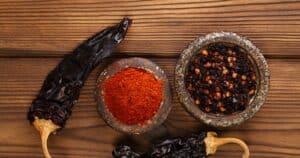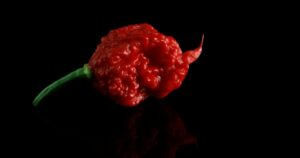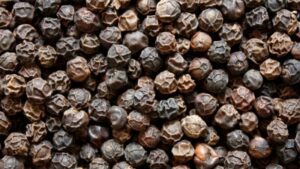If you love spicing up your cooking with hot peppers, you’ve probably wondered: are pepper seeds themselves actually spicy? It’s a common question many home cooks ask when handling fiery peppers. Before dashing to deseed a jalapeño or dice up a habanero, let’s get the facts straight on where the signature sizzle comes from.
Contrary to popular belief, the seeds inside a hot pepper do not contain any capsaicin, the compound that produces the burning heat sensation. The real stash of this spicy chemical lies inside the white membrane surrounding the seeds, known as the placenta or placental tissue.
So while the placental tissue packs the punch, the seeds harbor no inherent heat or
This explains why removing seeds and veins tempers some of the
In reality, the main role of seeds is adding textural crunch and subtle nutty flavor, not heat. Depending on the dish, you may savor or dislike this texture.
Now that you know the truth about pepper seeds and heat, you can better control
Get ready to debunk the myth and unleash new dimensions of heat and flavor in your dishes!
Pepper Seeds Don’t Actually Contain Capsaicin
Here’s the inside scoop: The seeds themselves do not harbor any capsaicin, the potent chemical compound that generates the burning sensation when you bite into a hot pepper. Surprised?
The real
So while the placental tissue surges with spicy oils, the seeds contain no capsaicin at all. Any residual tingling comes from contact with the surrounding membrane, not inherent heat within the seeds themselves.
Why Removing Seeds Cools Down Heat
If seeds aren’t spicy, why does removing them tone down a dish’s
Eliminating the seeds cuts out some of the placental tissue surrounding them. So you lower the total capsaicin content by throwing away this membrane. Seeds on their own, however, impart zero heat or
Keep in mind even without seeds, the pepper’s outer flesh still contains a decent dose of capsaicin. Removing seeds provides a mild reduction in
Seeds Add Texture and Flavor, Not Heat
Rather than
Depending on your preferences and the dish at hand, you may want to leave the seeds in for these textural and flavor benefits or take them out to alter the mouthfeel.
For salsas and sauces, removing the seeds creates a smoother, more uniform texture. But for roasted peppers and other applications, you may savor the extra crunch seeds provide. Play around to see what you like best!
How to Really Cool the Burn
If you truly want to take down the heat substantially when cooking, focus beyond just the seeds:
- Use bell peppers or other sweet pepper varieties that lack capsaicin completely.
- Opt for immature peppers that haven’t fully ripened to maximize pungency.
- Add cooling dairy ingredients like yogurt, milk, or cream.
- Balance with sweet fruits or sugars to counter the spicy bite.
- Boost fats and oils, which can mellow out heat.
- Dilute spicy peppers with extra mild veggies.
- Soak peppers in milk before cooking; the proteins bind to capsaicin.
Now that you know seeds aren’t the key
Are Seeds from Spicy Peppers Spicy for Planting?
When collecting seeds from hot peppers to grow new plants, an important question arises – will these seeds produce equally spicy peppers?
The answer is yes! Seeds contain all the genetic information needed to replicate the parent plant. This includes genes that enable capsaicin production.
So while pepper seeds themselves contain no capsaicin, the seeds from spicy peppers will grow into plants that can synthesize the fiery compound. They will produce peppers as hot as the ones the seeds came from.
However, growing conditions can also impact heat level. Stressors like drought, high temperatures, and nutrient deficiencies can increase capsaicin content. Ideal conditions may moderate the spiciness slightly.
Whether you want to turn up the sizzle or cool down the burn, harness the natural heat of peppers by understanding exactly where capsaicin resides. Let your tastebuds discover new dimensions of spicy bliss!





